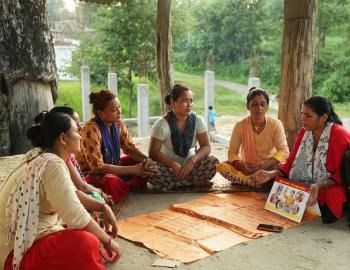WORKING PAPER: Beyond COP 21 - What did Asian countries pledge in the Paris Agreement?
WORKING PAPER: Beyond COP 21 - What did Asian countries pledge in the Paris Agreement?
Intended Nationally Determined Contributions (INDCs) are the blueprints developed by each country that outline how they plan to contribute towards tackling climate change beyond 2020. The INDCs were created by national governments and communicated to the United Nations Framework Convention on Climate Change (UNFCCC) before and after the 21st Conference of the Parties (COP 21), held in Paris, France in 2015.
The national-level commitments in the INDCs are now part of the Paris Agreement that came out of COP 21, and demonstrate the visions, strategies and priorities for addressing mitigation and adaption challenges. Combined, the aggregated commitments and priorities outline the nature, extent and magnitude of future global responses to managing climate change.
But before countries begin to implement what they have promised in their INDCs, close scrutiny of these documents will provide insights into regional needs and priorities to achieve these targets and promises. This will not only enhance efforts to reduce greenhouse gas emissions, but also enhance resilience through adaptive measures.
A new CDKN working paper, Beyond COP 21: What did Asian countries pledge in the Paris Agreement? by Nadeem Ahmad, Irum Hamid and Syed Twangar H. Kazmi of LEAD Pakistan contributes to this process. The authors review 18 INDCs from South Asia and South-East Asia in terms of their focus on four themes: (1) mitigation targets; (2) climate finance; (3) disaster risk reduction; and (4) social inclusion, particularly gender.
The authors reviewed each INDC in terms of the types of target included, their quantification and demonstrated level of ambition; their motivational potential; and their pathways towards a low-carbon future. The financing needed to implement the pledges within each INDC was analysed in terms of the domestic finances allocated, as well the need for financing from external sources. For each of these, the 18 INDCs are ranked according to a thematic five-point rating scale, from 1 (no mention of the thematic area) to 5 (thematic area covered extensively).
Awareness of the INDCs is gaining some momentum among development partners and national governments in South Asia and South-East Asia, but there is still a lack of understanding among non-climate policy-makers, practitioners and civil society. Furthermore, policy-makers in some countries are not fully aware of what others in their region are proposing in their INDCs, or what the overall regional picture looks like. This Working Paper will help to increase continent-wide understanding and awareness of the INDCs.



